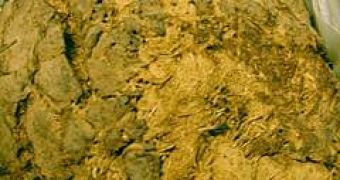A trip into the Siberian tundra will remind you now of a visit at a cow farm. Because of the scent. But what you smell is not cow dung, but mammoth one: this is the syrupy mud, resulted from the thawing of the permafrost. Just another symptom of global warming: the prehistoric dung lifted from suspended animation. And mammoths left mountains of it.
"This will lead to a type of global warming which will be impossible to stop," said Sergei Zimov, 52, chief scientist at the Russian Academy of Science's North Eastern Scientific station (eight times zones away from Moscow) who for almost 30 years has been investigating climate changes in Russia's Arctic.
He believes that when the organic matter left behind by mammoths and other Ice Age species is exposed to the air by the thawing permafrost, bacteria will decompose this to carbon dioxide and methane, a 20 times more powerful greenhouse effect gas. The acceleration of the global warming will be much rapid than even the most pessimistic predictions.
"The deposits of organic matter in these soils (permafrost) are so gigantic that they dwarf global oil reserves," Zimov said. Man-caused emissions reach the number of 7 billion metric tons of carbon annually.
"Permafrost areas hold 500 billion tons of carbon, which can fast turn into greenhouse gases. If you don't stop emissions of greenhouse gases into the atmosphere ... the Kyoto Protocol (an international pact aimed at reducing greenhouse emissions) will seem like childish prattle." said Zimov.
His theory is taken into consideration by the scientific community.
"There's quite a bit of truth in it," Julian Murton, member of the International Permafrost Association, told Reuters. "The methane and carbon dioxide levels will increase as a result of permafrost degradation."
A UN report in June signaled the potential danger.
"Permafrost stores a lot of carbon, with upper permafrost layers estimated to contain more organic carbon than is currently contained in the atmosphere. Permafrost thawing results in the release of this carbon in the form of greenhouse gases which will have a positive feedback effect to global warming."
The Siberian permafrost is found in an area bigger than Europe. At Duvanny Yar (on the shores of the Kolyma River), you can actually see the phenomenon: the steep-sided river bank, maintained by permafrost, is falling down as the ice melts. Every few minutes, another chunk of soil and permafrost falls into the river with a big noise.
Zimov said that forested areas are less affected by melting. The cover of larch trees with berries and mushrooms and a soft cushion of moss and lichen keep cool the soil below.
Elsewhere in Siberia, places that 5-10 years ago were just barren tundra harbor now a multitude of lakes, coming from the water of thawing permafrost. These lakes continuously bubble methane.
But the permafrost melting also affects the very few human settlements of the tundra. In Chersky, a town with a population of 3,000, apartment blocks display cracks through their walls, just like after an earthquake, as the soil beneath them collapses and many had to be demolished as unsafe.
The scarcity of tundra population may not trigger an international alarm signal, but within a few years the effects of the permafrost thawing in Siberia will be felt worldwide.
"Local problems of the north will inevitably turn into the problems of Russia's south, the Amazon region or Holland." Zimov concluded.

 14 DAY TRIAL //
14 DAY TRIAL //